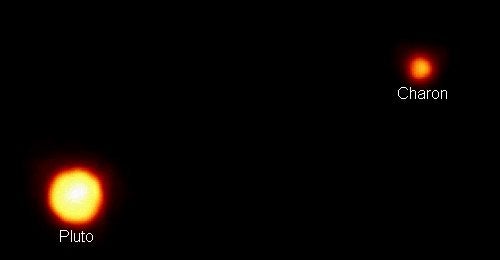On July 10–11, astronomers from the Massachusetts Institute of Technology (MIT) and Williams College teamed up in Chile to observe Pluto’s moon, Charon, pass in front of a star about 1,000 light-years away. The event is a type of eclipse known as an occultation — when one object obscures another from view. The event gives astronomers the chance to study the way the star, named C313.2, dimmed. This measurement could verify the presence of an atmosphere around Charon.
Despite Charon’s small size — 700 miles (1,100 kilometers) in diameter — and weak gravity, the moon’s severe cold temperature holds gases close to the surface. The team studied a similar process of global warming that makes up the atmosphere of Triton, one of Neptune’s moons. Because of similar conditions in Pluto’s part of the solar system (the average temperature on Pluto is &endash;390° Fahrenheit, &endash;235° Celsius), the team thinks Charon could have an atmosphere, too.
But, as Williams College team leader Jay Pasachoff tells Astronomy, “We will be evaluating the observations to see if, after computer modeling, there is any sign of an atmosphere. None was immediately visible, in contrast to our 2002 observations of Pluto’s atmosphere.”
The MIT-Williams team observed the occultation with four different telescopes in Chile. More than 1,000 square feet (100 meters) total of telescope surface observed the event: the 6.5-m Clay Telescope and the 2.5-m DuPont Telescope at Las Campanas Observatory, the 8-m Gemini South at Cerro Pachon, and the 0.8-m telescope at Cerro Armazones Observatory of Chile’s Catholic University of the North near Cerro Paranal.
These telescopes were selected because they form a north-south line that could intercept the path of Charon’s shadow. “Still, the path was uncertain up to hundreds of kilometers even on the day of the occultation,” admits Pasachoff. “We were relieved to find out after the occultation that all our telescopes were indeed in the path.”
In addition to a better understanding of Charon’s atmosphere, the observations should provide more specifics as to the distant moon’s size and density. “We have excellent observations” from the telescopes, Pasachoff said.
In 1980, astronomers witnessed a similar event, but with only one telescope and with less-sophisticated equipment.










